Is there any instrument as angelic to the ear and eye as the harp? I had hoped to find a reference to Jeanne Fouillon online, but haven’t succeeded so far. Her harp is certainly very graceful and beautiful to the eye.
The carte-de-visite was made by Augustin Michel in Grenoble, France, around 1890.
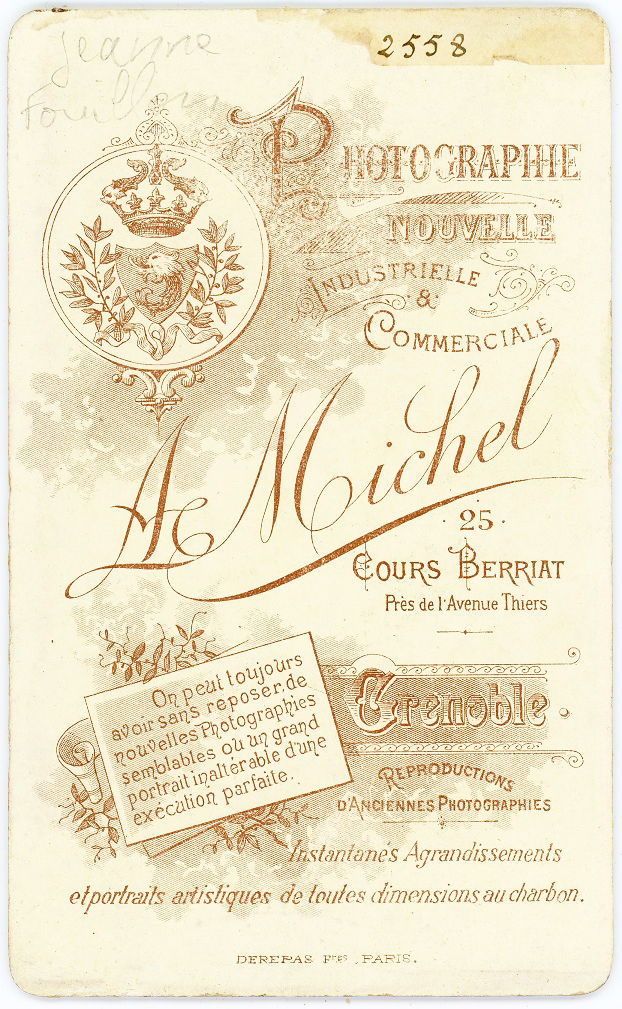

Jeanne’s portrait was for sale in Cornwall, England, together with a portrait of another harpist. He isn’t identified, but his CDV was made in London at the studio of George and Rebecca Lavis, probably around 1870 (see comments below for more information). I doubt there was any connection between the two musicians. Jeanne would have been born about the time the older man’s photograph was taken.
[Update on April 17: I’m confident the man below is composer and professor John Balsir Chatterton (1804-1871). Please see the next post for information about him.]
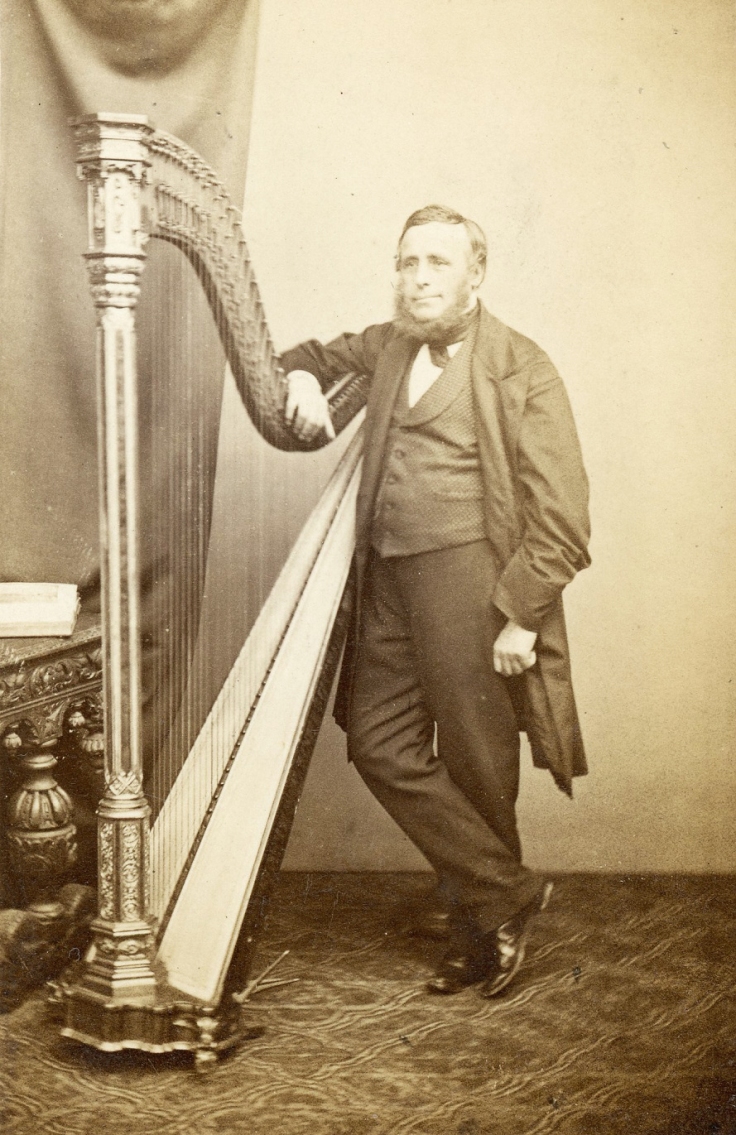


This post is dedicated to my first subscriber, the angelic harpist and composer Carol Wood.

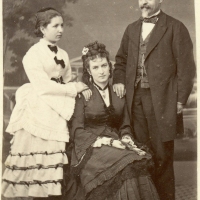
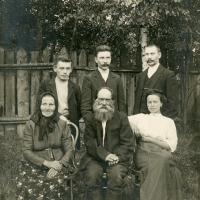
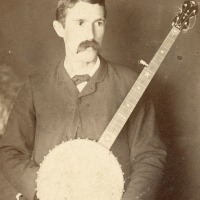
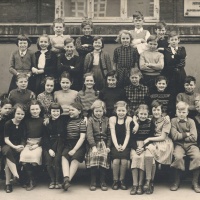
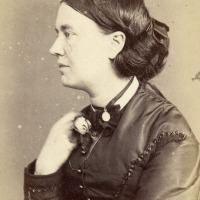
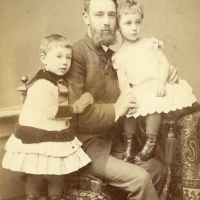
OH MY GOODNESS! Thank you so much, Brad. What a surprise to find this post dedicated to me! I was just reading the post and looking carefully at the images, wondering whether there might be some way I could find out something about Jeanne Fouillon (but I can’t think of anything), and then I came to the very sweet dedication at the bottom. I’m delighted beyond words!
I can say that Mlle. Fouillon seems to be playing a single-action harp, judging by the single row of sharpening discs along the neck (the top) of her harp. Most modern orchestral harps, like the Lavis harp in the second picture, are double-action, meaning they have a mechanism that allows all the strings to play three pitches, sharp, natural, and flat. The single-action harp allows only two pitches for each string. (The pedals, which you can see in both images, operate the discs, by means of a complicated system of rods and levers.) I must also point out that Mlle. Fouillon has allowed her harp to be photographed with quite a tangle of untrimmed strings at the top. It also seems as if the harp is missing its four lowest strings. However, I am certain that this harp is no mere prop for her portrait. Her posture, hand position, and left foot on one of the pedals all make it clear that she knows what she is doing behind a harp!
LikeLiked by 2 people
How interesting, Carol! I’m relieved to hear that Mlle. Fouillon is likely to have been a harpist and not simply a model. That makes the portrait more authentic, although staged photos are also great fun. I did wonder about the scraggle of strings at the top, but hadn’t noticed the missing strings. A harp would have been an unusual prop, but early photographers were always looking for ways to stand out. I’m not sure that I’ve ever seen another 19th c. portrait with a harp. It would have taken a great deal of effort to get one into a studio!
LikeLike
Often, when harpists change strings because of broken strings or just for fresher strings, we secretly leave some untrimmed “scraggle” for a while. Sometimes, especially in the higher octaves, the left over part can even be re-used, if the newer string breaks for some reason. But it is very unusual to see a harpist perform with untrimmed strings, and, I would think, even more unusual to have one’s harp photographed with the scraggly strings. This suggests to me that the photograph was a very impromptu one. And though, as you know, it is never easy to move any but the smallest harps (like lap harps), a single-action harp would be considerably lighter and more maneuverable than a double-action harp.
LikeLiked by 1 person
Very interesting! I wonder if her harp was already an antique in 1890.
LikeLike
Lovely photos and great to get all the extra information from Carol.
LikeLiked by 1 person
Thank you! I know that your family is very musical, and that you have a fondness for the theatrical. 😉
LikeLiked by 1 person
Ah! You have checked out my other (almost dead but not quite, I hope) blogs! Thank you! 😃
LikeLike
Wait, I only know of two fabulous blogs of yours. Is there a third? If so, you must tell me about it! 🙂
LikeLiked by 1 person
Oh, I remember now. I blogged some photos from my family on my Mugshots and Miscellaneous blog, didn’t I. I also started a blog called Prodigy 1916 to tell some of my grandfather’s history. It very quickly became too much for me, though.
LikeLiked by 1 person
I’ve also had a look for the first harpist, but can’t find her. I would assume that this was meant to be a professional card, like the actress and actor cards, but for a musician. When I first saw it in your post I thought that the marks on it were part of the image – it looks like a galaxy of stars, don’t you think, and very ‘heavenly’ to go with the harpist image! 🙂
The address on the back of the second photo is in Regent Street in London which is – and always has been – a very upmarket, wealthy part of London. He did have a studio in Eastbourne too, but possibly not this one. 135 now seems to be a bank, HSBC to be precise! Here it is on Google Streetview:
https://www.google.co.uk/maps/@51.5111825,-0.1389716,3a,75y,244.23h,92.6t/data=!3m7!1e1!3m5!1s5FVh7KyHJ7YReweK_zW7WQ!2e0!6s%2F%2Fgeo3.ggpht.com%2Fcbk%3Fpanoid%3D5FVh7KyHJ7YReweK_zW7WQ%26output%3Dthumbnail%26cb_client%3Dmaps_sv.tactile.gps%26thumb%3D2%26w%3D203%26h%3D100%26yaw%3D337.41824%26pitch%3D0%26thumbfov%3D100!7i13312!8i6656?dcr=0
and here’s the British Museum listing for the photographer: http://www.britishmuseum.org/research/search_the_collection_database/term_details.aspx?bioId=187520
LikeLiked by 1 person
Excellent research! I’ll amend the post to say that the photo was taken in London. Not sure why I didn’t find the British Museum page in Google results. I need to get in the habit of checking the museum’s website directly. The information about Lavis there is very helpful, both because it mentions his London studio, and also because it lists the names George and Rebecca Lavis, which must be what G & R Lavis refers to! Rebecca may have been a photographer in her own right. I’ll see if I can find anything more on her.
The spots in the emulsion were fortuitous, weren’t they? I thought about working more of a celestial theme into the post, but decided not to get carried away. Glad you noticed and commented on them. 🙂
LikeLiked by 1 person
I sometimes find myself on the British Museum pages, but not from direct searches there as I can’t seem to find what I’m looking for (with apologies to U2!!)
LikeLiked by 1 person
I did some digging on Ancestry and found that George and (Mrs.) Rebecca Lavis were listed as photographers or photographic artists in the London city directories of 1865, 1870, and 1875. In the 1871 Census, Rebecca (42) and George (39) are in Brighton. In the 1881 Census, Rebecca’s still in Brighton, but she’s a widow.
LikeLiked by 1 person
I wonder if they were a married couple or if they were brother and sister? ‘Mrs’ is often used in old documents as a term of respect.
LikeLike
The British Museum page mentions that George died in 1875. With Rebecca a widow in 1881, I’m convinced they were a married couple.
LikeLike